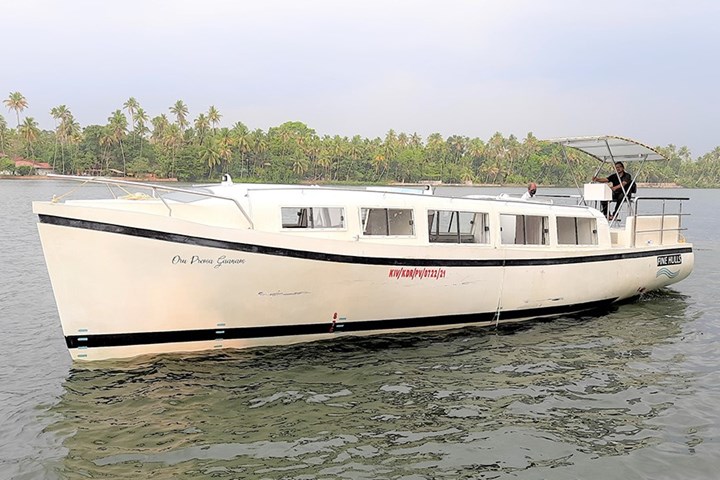Fine Hulls brings bold boat design with Diab sandwich composites
The pleasure yacht is entirely made from Diab’s Divinycell foam sandwich core using a vacuum infusion process for excellent stiffness, strength and light weight.

Photo Credit: Diab, Fine Hulls
Diab Core Materials Pvt. Ltd. (Chennai, India) recently announced that Fine Hulls (India) created a full-fledged hull form construction for a pleasure yacht using vacuum infusion and the company’s Divinycell foam sandwich core. The boat, named “Oru Prema Gaanam,” was designed by Fine Hull’s owner, Prof. V. Anantha Subramanian, to tap into the heritage tourism potential on the scenic backwaters of Kerala, and was built in Chennai, India with the Indian Register of Shipping accreditation for the yard.
Fine Hulls itself offers research-based turnkey solutions and optimized designs to the maritime industry, using state-of-the-art computational and experimental tools and construction processes. The company has mainly manufactured hydrokinetic turbine ducts, precision hull forms for hydrodynamic testing on a laboratory scale and various fiberglass products using single skin or sandwich construction.
The pleasure yacht is made entirely of sandwich composites. The general concept involves quadriaxial fibers with Divinycell core (HM80) for the hull, superstructure and inner deck. The outer deck and bulkheads use Divinycell (PN). The aft deck module with deck and seating is integrally molded as a single unit in the same vacuum infusion process. According to Diab, the sandwich composite gives unmatched stiffness, strength and weight savings with a superior glass fiber to resin ratio.
“It has been proven in our experience that sandwich composite fully taps not only the advantages of strong, lightweight construction with higher stiffness, but also provides better product homogeneity, as compared with single skin manual molding,” says Prof. V. Anantha Subramanian. “There is definitely a higher initial investment by way of vacuum pumps, consumables. However, there are long-term benefits which will pay for themselves in the long run.”
The design commenced with hydrodynamic evaluation of the hull form with towing tank tests, optimizing the hull for space, powering and comfort. The project progressed with the manufacture of the plug, negative form with the participation of an entire project group comprising specialist research graduates, technicians, the Indian Register of Shipping for design approvals and the construction yard.
“Thanks to Diab, we have a lightweight yacht. Though as a designer and builder, I was scrupulously aware of weight control, in the final reckoning the weight and center of gravity control were excellent,” concludes Prof. V. Anantha Subramanian.
Related Content
-
Sulapac introduces Sulapac Flow 1.7 to replace PLA, ABS and PP in FDM, FGF
Available as filament and granules for extrusion, new wood composite matches properties yet is compostable, eliminates microplastics and reduces carbon footprint.
-
Cryo-compressed hydrogen, the best solution for storage and refueling stations?
Cryomotive’s CRYOGAS solution claims the highest storage density, lowest refueling cost and widest operating range without H2 losses while using one-fifth the carbon fiber required in compressed gas tanks.
-
Manufacturing the MFFD thermoplastic composite fuselage
Demonstrator’s upper, lower shells and assembly prove materials and new processes for lighter, cheaper and more sustainable high-rate future aircraft.














.jpg;maxWidth=300;quality=90)
